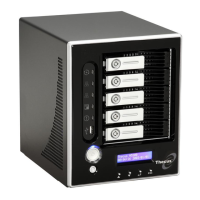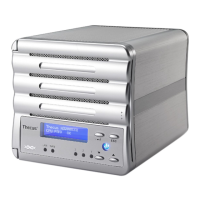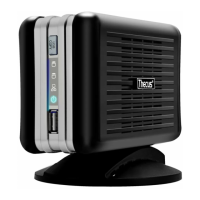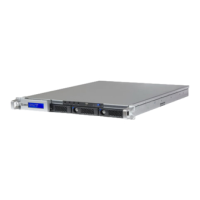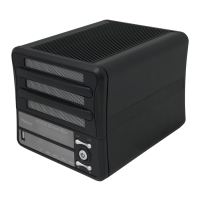Appendix C: RAID Basics
Overview
A Redundant Array of Independent Disks (RAID) is an array of several hard disks
that provide data security and high performance. A RAID system accesses several
hard disks simultaneously, which improves I/O performance over a single hard disk.
Data security is enhanced by a RAID, since data loss due to a hard disk failure is
minimized by regenerating redundant data from the other RAID hard disks.
Benefits
RAID improves I/O performance, and increases data security through fault
tolerance and redundant data storage.
Improved Performance
RAID provides access to several hard disk drives simultaneously, which greatly
increases I/O performance.
Data Security
Hard disk drive failure unfortunately is a common occurrence. A RAID helps prevent
against the loss of data due to hard disk failure. A RAID offers additional hard disk
drives that can avert data loss from a hard disk drive failure. If a hard drive fails, the
RAID volume can regenerate data from the data and parity stored on its other hard
disk drives.
RAID Levels
The Thecus N4100PRO supports standard RAID levels 0, 1, 5, 6, 10, and JBOD. You
choose a RAID level when you create a system volume. The factors for selecting a
RAID level are:
• Your requirements for performance
• Your need for data security
• Number of hard disk drives in the system, capacity of hard disk drives in the
system
The following is a description of each RAID level:
RAID 0
RAID 0 is best suited for applications that need high bandwidth but do not require a
high level of data security. The RAID 0 level provides the best performance of all the
RAID levels, but it does not provide data redundancy.
RAID 0 uses disk striping and breaking up data into blocks to write across all hard
drives in the volume. The system can then use multiple hard drives for faster read
and write. The stripe size parameter that was set when the RAID was created
determines the size of each block. No parity calculations complicate the write
operation.
RAID 1
RAID 1 mirrors all data from one hard disk drive to a second one hard disk drive,
thus providing complete data redundancy. However, the cost of data storage
capacity is doubled.
This is excellent for complete data security.
126

